Filter by
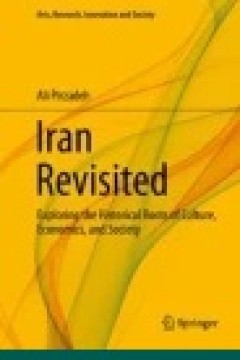
Iran Revisited: Exploring the Historical Roots of Culture, Economics, and Soc…
This book examines Modern Iran through an interdisciplinary analysis of its cultural norms, history and institutional environment. The goal is to underline strengths and weaknesses of Iranian society as a whole, and to illustrate less prescriptive explanations for the way Iran is seen through a lens of persistent collective conduct rather than erratic historical occurrences. Throughout its hist…
- Edition
- -
- ISBN/ISSN
- 978-3-319-30485-4
- Collation
- -
- Series Title
- -
- Call Number
- -
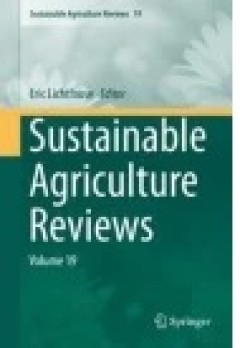
Sustainable Agriculture Reviews
This book features articles that analyze current agricultural issues and knowledge. It also proposes novel, environmentally friendly solutions that are based on integrated information from such fields as agronomy, soil science, molecular biology, chemistry, toxicology, ecology, economics and the social sciences. Coverage examines ways to produce food and energy in a sustainable way for humans …
- Edition
- Volume 19
- ISBN/ISSN
- 978-3-319-26777-7
- Collation
- VI, 399
- Series Title
- Sustainable Agriculture Reviews
- Call Number
- -
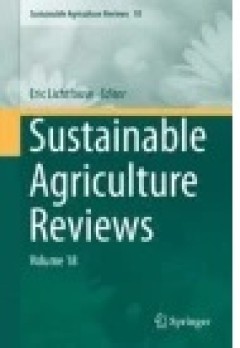
Sustainable Agriculture Reviews
This book features review articles that analyze current agricultural issues and knowledge. It also proposes novel, environmentally friendly solutions that are based on integrated information from such fields as agroecology, soil science, molecular biology, chemistry, toxicology, economics and the social sciences. Coverage examines ways to produce food and energy in a sustainable way for huma…
- Edition
- Volume 18
- ISBN/ISSN
- 978-3-319-21629-4
- Collation
- VI, 319
- Series Title
- Sustainable Agriculture Reviews
- Call Number
- -
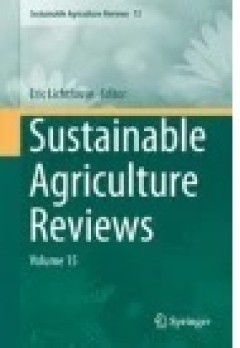
Sustainable Agriculture Reviews
Sustainable agriculture is a rapidly growing field aiming at producing food and energy in a sustainable way for humans and their children. Sustainable agriculture is a discipline that addresses current issues such as climate change, increasing food and fuel prices, poor-nation starvation, rich-nation obesity, water pollution, soil erosion, fertility loss, pest control, and biodiversity depletio…
- Edition
- -
- ISBN/ISSN
- 978-3-319-16988-0
- Collation
- VI, 214
- Series Title
- Sustainable Agriculture Reviews
- Call Number
- -
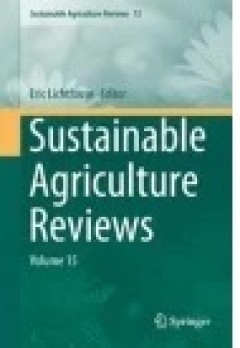
Sustainable Agriculture Reviews
Sustainable agriculture is a rapidly growing field aiming at producing food and energy in a sustainable way for humans and their children. Sustainable agriculture is a discipline that addresses current issues such as climate change, increasing food and fuel prices, poor-nation starvation, rich-nation obesity, water pollution, soil erosion, fertility loss, pest control and biodiversity depletion…
- Edition
- Volume 17
- ISBN/ISSN
- 978-3-319-16742-8
- Collation
- VI, 366
- Series Title
- Sustainable Agriculture Reviews
- Call Number
- -
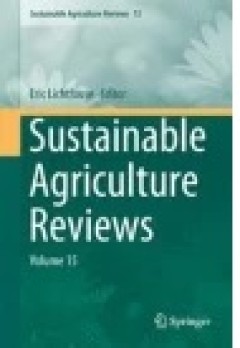
Sustainable Agriculture Reviews
Sustainable agriculture is a rapidly growing field aiming at producing food and energy in a sustainable way for humans and their children. It is a discipline that addresses current issues: climate change, increasing food and fuel prices, poor-nation starvation, rich-nation obesity, water pollution, soil erosion, fertility loss, pest control and biodiversity depletion. This series gathers review…
- Edition
- -
- ISBN/ISSN
- 978-3-319-09132-7
- Collation
- IX, 407
- Series Title
- Sustainable Agriculture Reviews
- Call Number
- -

Invertebrate Bacteriology: Function, Evolution and Biological Ties
This compendium reviews different processes acting on bacterial groups that evolved one or more relationships with members of the most important invertebrate Phyla. Starting from principles of basic bacteriology the book provides data on bacteria interactions with pests, animal or human diseases. Being present in all environments, from deep see to crops, animals or plants, invertebrates represe…
- Edition
- -
- ISBN/ISSN
- 978-94-024-0884-3
- Collation
- -
- Series Title
- -
- Call Number
- -
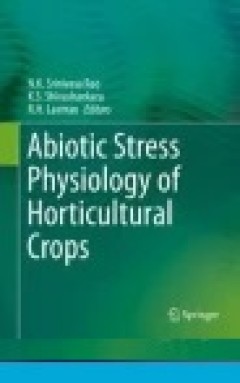
Abiotic Stress Physiology of Horticultural Crops
This book brings together recent advances in the area of abiotic stress tolerance in various vegetables, fruit crops, plantation crops and tuber crops. The main challenges to improving the productivity of horticultural crops are the different types of abiotic stresses generally caused by climate change at the regional and global level. Heat, drought, cold and salinity are the major abiotic stre…
- Edition
- Ed. 1
- ISBN/ISSN
- 978-81-322-2725-0
- Collation
- XIV, 368
- Series Title
- -
- Call Number
- 581 ABI a
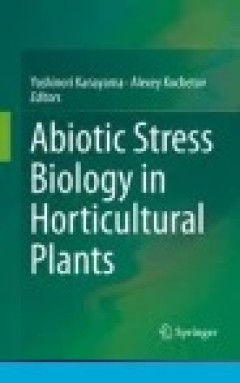
Abiotic Stress Biology in Horticultural Plants
The purpose of this publication is to elucidate the biological aspect of the abiotic stress response from the field to the molecular level in horticultural plants. This book is unique in that it concerns the basic aspect of abiotic stress biology and research progress at the molecular level in model plants or major field crops, as it focuses mainly on the abiotic stress response in existing hor…
- Edition
- Ed. 1
- ISBN/ISSN
- 978-4-431-55251-2
- Collation
- VIII, 220
- Series Title
- -
- Call Number
- 581 ABI a

Environmental and Microbial Relationships
This volume provides insights into current research on fungal populations, communities and their interactions with other organisms. It focuses on fungal responses to the physical environment; interactions with bacteria, other fungi, invertebrates and plants; the role of fungi in ecosystem processes such as decomposition and nutrient cycling; and aspects of biogeography and conservation. Since …
- Edition
- -
- ISBN/ISSN
- 978-3-319-29532-9
- Collation
- 15 b/w illustrations, 25 illustrations in colour
- Series Title
- -
- Call Number
- -
 Computer Science, Information & General Works
Computer Science, Information & General Works  Philosophy & Psychology
Philosophy & Psychology  Religion
Religion  Social Sciences
Social Sciences  Language
Language  Pure Science
Pure Science  Applied Sciences
Applied Sciences  Art & Recreation
Art & Recreation  Literature
Literature  History & Geography
History & Geography